Discovery date 28 November 2000 Pronunciation /ˈværənə/ VARR-ə-nə Discovered 28 November 2000 | Alternative names 2000 WR106 Inclination 17.165° Discoverer Robert S. McMillan | |
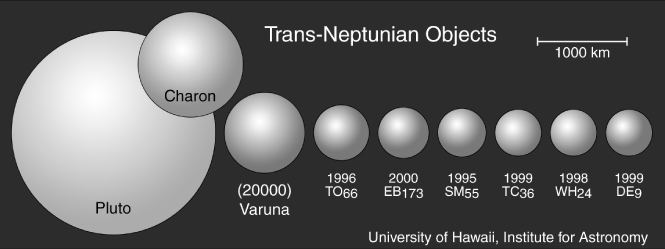 | ||
Similar | ||
20000 varuna a huge asteroid or a small dwarf planet space engine
20000 Varuna is a large classical Kuiper belt object. It is probably a dwarf planet. It rotates rapidly and hence its shape is probably very elongated.
Contents
- 20000 varuna a huge asteroid or a small dwarf planet space engine
- Discovery
- Name
- Size
- Occultation
- Orbit
- Physical characteristics
- Dwarf planet
- References
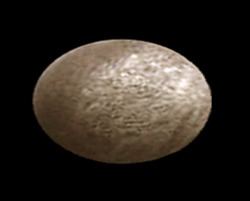
Discovery
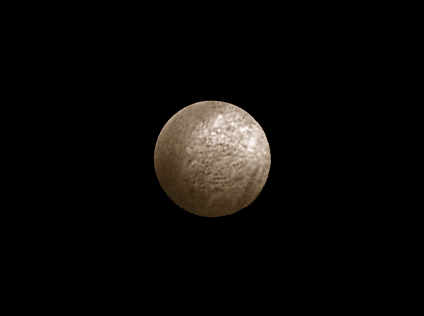
Varuna was discovered on 28 November 2000 by Robert McMillan of Spacewatch. It was given the provisional designation 2000 WR106 and has been precovered in plates dating back to 1954.
Name
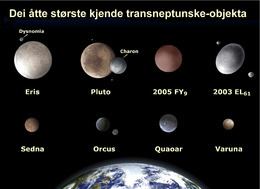
Varuna is named after a Hindu deity. Varuna was one of the most important deities of the ancient Indians, and he presided over the waters of the heaven and of the ocean and was the guardian of immortality. Due to his association with the waters and the ocean, he is often identified with Greek Poseidon and Roman Neptune. Varuna received the minor planet number 20000 because it was the largest cubewano found so far and was believed to be as large as Ceres.
Size
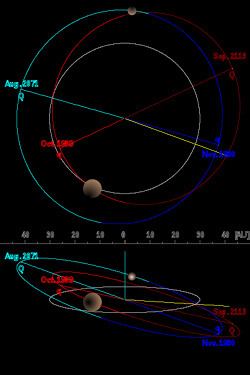
The size of the large Kuiper belt objects can be determined by simultaneous observations of thermal emission and reflected sunlight. Unfortunately, thermal measures, intrinsically weak for distant objects, are further hampered by the absorption of Earth's atmosphere, because only the weak 'tail' of the emissions is accessible to Earth-based observations. In addition, the estimates are model-dependent with the unknown parameters (e.g. pole orientation and thermal inertia) to be assumed. Consequently, the estimates of the albedo vary, resulting in sometimes substantial differences in the inferred size. Estimates for the diameter of Varuna have varied from 500 to 1,060 km. Multi-band thermal measurements from the Herschel Space Observatory in 2013 yielded a diameter of 7005668000000000000♠668+154
−86 km.
Occultation
A 28-second occultation of an 11.1 magnitude star by Varuna was observed from Camalaú, Paraíba, Brazil, on the night of 19 February 2010. Results of the 2010 occultation as seen from São Luís with a duration of 52.5 seconds corresponds with a chord of 7006100300000000000♠1003 km. But Quixadá 255 km away had a negative result suggesting a significantly elongated shape is required for Varuna. Because the occultation occurred near Varuna's maximum brightness, the occultation was observing the maximum apparent surface area for an ellipsoidal shape.
Orbit
Varuna is classified as a classical trans-Neptunian object and follows a near-circular orbit with a semi-major axis of ≈43 AU, similar to that of Quaoar but more inclined. Its orbital period is similar to Quaoar at 283 years. The graph shows the polar view (top; Varuna’s orbit in blue, Pluto’s in red, Neptune in grey). The spheres illustrate the current (April 2006) positions, relative sizes and colours. The perihelia (q), aphelia (Q) and the dates of passage are also marked. Interestingly, the orbits of Varuna and Pluto have similar inclination and are similarly oriented (the nodes of both orbits are quite close). At 43 AU and on a near-circular orbit, unlike Pluto, which is in 2:3 orbital resonance with Neptune, Varuna is free from any significant perturbation from Neptune. The ecliptic view illustrates the comparison of Varuna's near-circular orbit with that of Pluto (highly eccentric, e = 0.25), both similarly inclined.
Physical characteristics
Varuna has a rotational period of approximately 6.34 hours. It has a double-peaked light curve. Given the rapid rotation, rare for objects so large, Varuna is thought to be an elongated spheroid (ratio of axis 2:3), with a mean density around 1 g/cm3 (roughly the density of water). Examination of Varuna's light curve has found that the best-fit model for Varuna is a triaxial ellipsoid with the axes a,b,c in ratios in the range of b/a = 0.63–0.80, and c/a = 0.45–0.52 and a bulk density of 6999992000000000000♠0.992+0.086
−0.015 g/cm3.
Since the discovery of Varuna, Haumea, another, even larger, rapidly rotating (3.9 h) object, has been discovered and is also thought to have an elongated shape. The surface of Varuna is moderately red (similar to Quaoar) and small amounts of water ice have been detected on its surface. A recent study of the surface composition of (20000) Varuna. After studying the spectra corresponding to different rotational phases, they do not find any indication of surface variability. They also find that the most probable composition for the surface of Varuna is a mixture of amorphous silicates (25%), complex organics (35%), amorphous carbon (15%) and water ice (25%). However, they also discuss another possible surface composition containing up to a 10% of methane ice. For an object with the characteristics of Varuna, this volatile could not be primordial, so an event, such as an energetic impact, would be needed to explain its presence on the surface.
Dwarf planet
The International Astronomical Union has not classified it as a dwarf planet. However, Brown places it on the high end of "highly likely", and Tancredi (2010) classifies it as "accepted" due to a density equal or higher than water, but has not made a direct recommendation for its inclusion.
